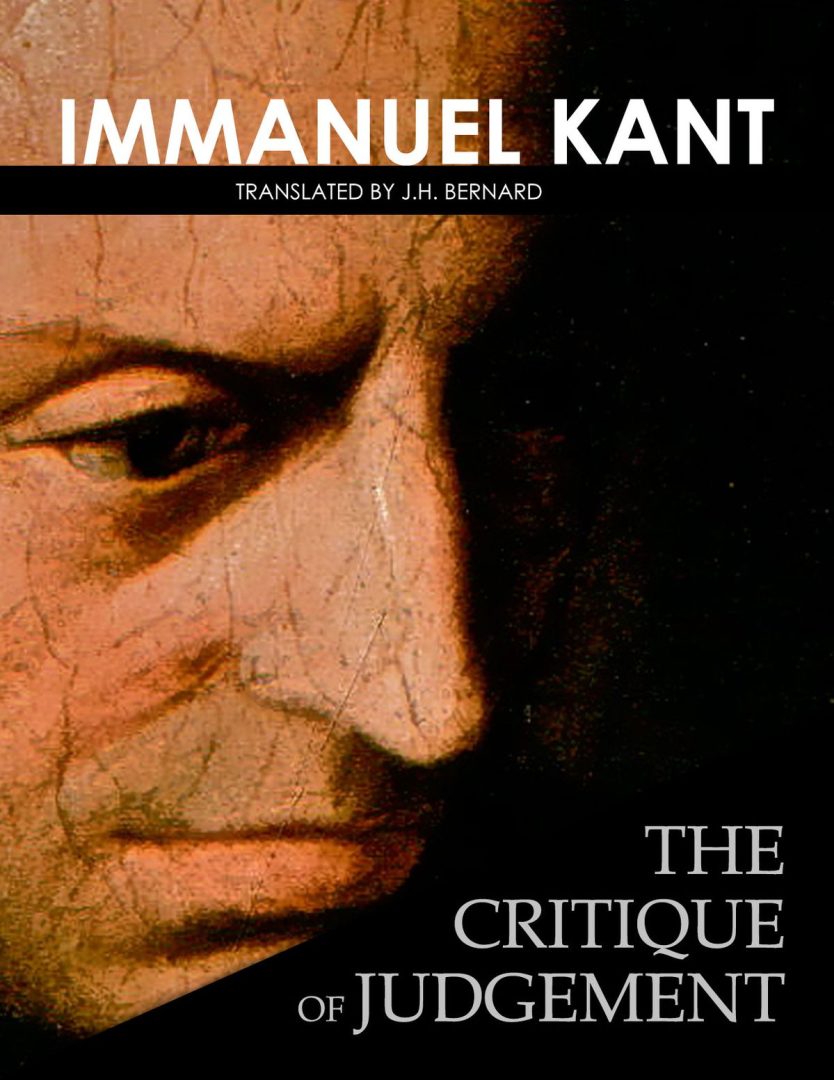Table of Contents
Bridging the Divide Between Nature and Freedom
Published in 1790, Critique of Judgment is the third and final installment in Immanuel Kant’s critical trilogy, following the Critique of Pure Reason (1781) and the Critique of Practical Reason (1788). Where the first two critiques deal with knowledge and morality, this volume focuses on aesthetics and teleology—judgment about beauty and purpose. Kant’s ambition here is vast: to reconcile the deterministic world of nature with the free realm of moral autonomy.
This book remains essential not only for aesthetics, but also for understanding Kant’s systematic attempt to unify human experience—how we come to terms with what is, what ought to be, and what is beautiful or purposeful in-between.
Core Themes: Beauty, Sublimity, and Finality
Judgments of Beauty
Kant distinguishes between the agreeable, the good, and the beautiful. A judgment of beauty is disinterested—it is not about what pleases us personally, nor about moral good, but about a universal feeling of harmony between the imagination and understanding. This notion forms the cornerstone of modern aesthetic theory.
“The beautiful is that which pleases universally without a concept.”
Beauty, for Kant, is not an objective property, nor a purely subjective preference, but a subjective universality—we expect others to agree with our sense of beauty, despite having no explicit reason for it. This paradox captures the tension that defines aesthetic judgment.
The Sublime
Kant’s theory of the sublime reveals the limits of human sensibility. Unlike beauty, which delights, the sublime overwhelms—found in vast oceans, towering mountains, or the infinite cosmos. It is a confrontation with that which exceeds our capacity to represent, yet elevates the mind because it awakens our sense of moral freedom.
Teleological Judgment
In the second part of the book, Kant turns to teleology, or the judgment of natural purposes. He ponders whether we can regard nature as if it were designed, even though science operates through mechanical causality. This analogical reasoning—viewing organisms as purposive systems—forms a crucial link between natural science and practical reason.
Stylistic and Conceptual Difficulty
As with all of Kant’s critical works, the style is dense and often impenetrable without prior grounding in his philosophy. Sentences are architectonic—structured like philosophical cathedrals—and terminology is used with absolute precision. However, those who invest in unpacking Kant’s prose are rewarded with a structure of ideas that continues to shape philosophy, especially in the realms of aesthetics, environmental philosophy, and systems theory.
Philosophical Significance
The Critique of Judgment is one of the earliest attempts to develop a non-reductive theory of aesthetics, laying the groundwork for thinkers like Schopenhauer, Hegel, Heidegger, and Arendt. It influenced Romanticism’s emphasis on subjective feeling, as well as 20th-century phenomenology and hermeneutics.
More profoundly, it addresses a question that haunts all intellectual traditions: How do we find meaning in a world governed by causal laws? Kant doesn’t collapse nature into morality or vice versa. Instead, he builds a reflective bridge—judgment as a faculty that mediates between what we know and what we value.
Modern Relevance: Aesthetics in the Age of Algorithms
In an era dominated by algorithmic curation, AI-generated content, and mass cultural production, Kant’s emphasis on disinterested aesthetic judgment challenges us to reclaim a sense of autonomous taste. His idea that beauty reveals a free play of mental faculties can be contrasted with modern media designed to maximize engagement and predictability.
Moreover, his analysis of teleology resonates in today’s debates over biological complexity, evolutionary theory, and intelligent design. Rather than asserting divine intention, Kant’s reflective judgment permits purposiveness without purpose—a model that respects scientific integrity while acknowledging our human inclination to interpret systems holistically.
Strengths and Limitations
Strengths:
- Foundational for Modern Aesthetics: Provides a rigorous basis for understanding beauty and sublimity.
- Integrative Framework: Bridges metaphysics, ethics, epistemology, and natural science.
- Profound Teleological Insights: Offers a non-dogmatic framework for thinking about nature and purpose.
Limitations:
- High Entry Barrier: Requires familiarity with Kant’s other works and terminology.
- Abstract Nature: Limited immediate application for readers seeking practical or emotional engagement.
- Historical Boundaries: Some biological and metaphysical assumptions reflect 18th-century views.
Best Audience Fit
This book is best suited for:
- Philosophy students and scholars with prior exposure to Kant’s Critique of Pure Reason
- Readers interested in aesthetics, Romanticism, or Enlightenment thought
- Scientists and ethicists exploring the philosophy of biology and design in nature
- Artists, critics, and intellectuals seeking deeper theoretical grounding in beauty and the sublime
TL;DR
Kant’s Critique of Judgment is a masterwork of philosophical architecture. It does not hand over ready-made answers, but cultivates a sensibility for nuanced reflection—on beauty, nature, and human freedom. Though daunting in style, the reward is an enduring framework through which to interpret art, life, and purpose with greater clarity and depth.
For those willing to cross the threshold, this critique offers not merely a theory of judgment, but an invitation to judge well.

Leave a Reply